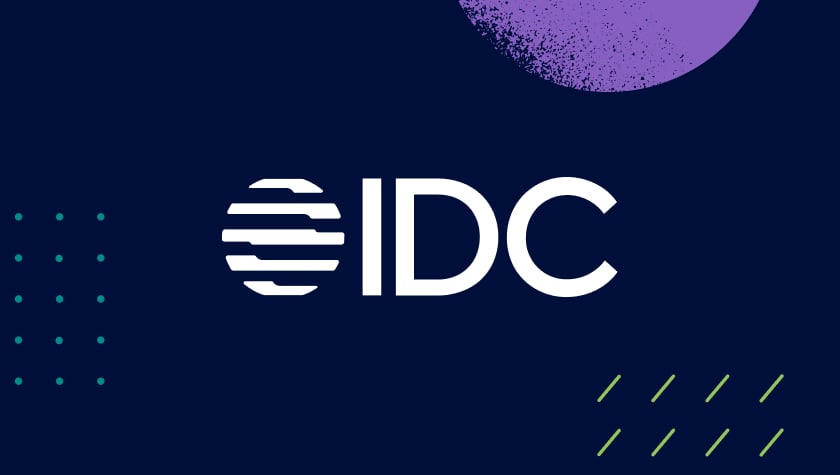
List to Fraud Trends 2022 here (11mins):
For most people, a new year represents new opportunities and a chance to start over. However, for fraudsters, it looks like everything old is new again in 2022 - this includes everything from get-rich-quick schemes, to crypto scams, to romance frauds, and more. But one thing fraudsters will do differently this year is pay closer attention to their victims’ lives. Read on to learn the 2022 fraud trends to watch out for:
A Rise in ATO Fraud & APP Fraud via Social Engineering
Customers who embraced digital banking habits because of the COVID-19 pandemic are unlikely to switch back completely to their pre-pandemic practices. The result is a rise in digital interactions and more targets for fraudsters to pursue. Armed with personal credentials obtained through the dark web or via phishing (or even social media), fraudsters can launch account takeover (ATO) attacks and compromise a legitimate user’s account. On the other hand if fraudsters can’t breach a customer’s account, they might use social engineering to trick victims using authorized push payment (APP) tactics. This latter fraud has become especially problematic in the U.K.
Fraudsters Study Victims and Pose as Vendors
More effective online security measures aren’t deterring fraudsters. Instead, fraudsters are adapting their schemes away from quick “smash and grab” attempts that involve breaching an account and quickly transferring money, to stalking their victim’s online transactions looking for patterns. Conducting layered research enables social engineering fraud or the use of personal information obtained from phishing or malware attacks to carefully hone messages to make scams more convincing.
Banks have been working for years to offer more personalized services to customers. Unfortunately, fraudsters are adopting the same strategy of playing the long game by crafting highly tailored narratives to deceive their victims. When a fraudster accesses a victim’s bank account (or email or eCommerce account, for that matter) they can learn important details about their life.
If they see their victim recently made payments for a parking violation or paid for a medical procedure, fraudsters can adopt the persona of a municipal employee or a medical office worker and claim a recent payment was not processed correctly. Next, they tell their victim to share their credit card or send money to a bank account they control. Because the fraudster uses such specific details, their scams have a better chance of working. Some fraudsters will craft a portfolio of narratives for a wide range of scenarios.
Real-Time B2B Payments Create Fraud Vulnerabilities
After a long build-up, it’s looking like instant business-to-business payments are on track to finally become a reality in 2022 (fingers crossed!) in regions where it has lagged. Businesses worldwide should prepare for how the enhanced speed of payments leaves them vulnerable to fraud. If a business loses money in real-time to fraud, the organization will struggle to trust banks that facilitate the transfer. Instant B2B payments create new opportunities for fraudsters to defraud global businesses quickly. That’s why it’s important that banks and businesses both implement the right safeguards.
IoT Opens New Fraud Avenues
Gone are the days when consumers had a checking, savings, and a credit card account. Now, most consumers have multiple traditional accounts, and a host of digital accounts like PayPal, Venmo, or even WhatsApp in some regions. And it doesn’t stop there. Many connected smart internet of things (IoT) devices like Amazon’s Alexa or Google Home can send money using voice commands. And soon it will be commonplace for people to send money through social media platforms.
If all this sounds like a dream come true for fraudsters, you’re right. In a connected commerce ecosystem, we expect to see a spike in attacks via IoT-connected devices and social engineering attacks. A disparate arrangement of finances calls for a new approach for banks to manage their customers’ financial risks.
Fraud Challenges for Challenger Banks
Digital-only and digital-first challenger banks need to attract more customers. One way they’re doing that is by making it easier for customers to quickly onboard. They also specifically want to appeal to younger customers, so they’re marketing their services on social media or partnering with digital influencers like YouTube and TikTok celebrities.
Fraudsters realize many challenger banks are less likely to have robust fraud controls in place, have no physical infrastructure to meet customers face-to-face, and want to make onboarding as seamless as possible. Given the combination of these factors, fraudsters see challenger banks as top targets.
Millennials & Gen Z Face Fraud
As younger people join the digital banking system, fraudsters are eager to take advantage of their unfamiliarity with digital banking. While younger people are more tech-savvy than their older counterparts, fraudsters have found several tactics that have proven effective against millennials and Gen Z customers. The latter group is falling for fake check scams at the same rate as senior citizens. Meanwhile, one in five millennial shoppers experienced online fraud during the 2020 holiday shopping season. Fraudsters will also scour these users’ social media accounts for social engineering purposes.
Get-Rich Quick Schemes Get Bigger
Want to get rich quick? Fraudsters hope so. They’ll lure victims into get-rich-quick schemes using the same social engineering tactics mentioned earlier to target their victims’ lifestyle or demographic. Fraudsters will use high-pressure tactics to convince victims that a once-in-a-lifetime, low-risk high-reward opportunity is available to them. Cryptocurrency scams are becoming increasingly popular with fraudsters for these types of schemes, notably in the Asia-Pacific region, which can cost individuals vast sums of money. Australian Federal Police recently reported a 172% rise in cryptocurrency scams from January to November 2021. Unfortunately, the mystery and newness of crypto makes these scams highly appealing to fraudsters.
Romance Scams
Romance scams proved to be one of the biggest scams of the pandemic in Australia, with consumers losing an estimated $851 million AUD. Scammers approach their victims online using dating sites or apps and pretend to be romantically attracted to them. Once their target is emotionally invested, they ask them for money for medical expenses, vehicle repairs, or for plane tickets to meet in person. In the end, the fraudsters pocket the money and disappear. Fraud trends like these are on track to continue as more people turn to dating apps for companionship in 2022.
Tips for Banks to Mitigate 2022 Fraud Trends
If history is any indication (and it often is), banks will face more than their fair share of fraud challenges in 2022. That’s why it’s wise to take steps now to protect your customers. Here are three tips for banks to mitigate fraud this year.
Educate Customers on 2022 Fraud Trends
Education remains the most important step banks can take to keep their customers safe. Banks should take steps to warn customers about all types of fraud threats. When it comes to get-rich-quick schemes in particular, it pays to remind customers that if an opportunity seems too good to be true, it probably is. Banks must embrace their obligations to help customers to stay safe and make the most informed choices possible.
Emphasize the impact on peoples’ lives
Fraud attacks inflict more harm than just financial losses. They also undermine the trust customers put in their banks. Even if a customer’s funds are recovered or reimbursed, they can have trouble trusting their bank and may consider leaving for a competitor. Banks should take the time to remind their employees of how fraud impacts their customers’ lives. Share cases of customers who were unable to pay their rent on time, put a down payment on a home, or pay their employees. Measures like this help employees see the human side of fraud and stop treating financial crime and risk in isolation.
Tap Into Intelligence Networks
With customers holding multiple financial accounts (and losing track of them sometimes), new IoT-connected devices becoming more active in financial services, more younger consumers using financial services, and challenger banks working to expand in the market, the financial services landscape looks riskier than it has ever been in recent memory. With so many different touchpoints to consider, banks need access to as much data as possible to prevent financial crime. Connecting to networks that allow players to share intelligence will help banks understand the risk currently facing the market and prepare for new, emerging threats.
A new year brings new challenges – and new opportunities. Let’s tackle the fraud trends that 2022 has in store for us together!
How do banks know how to choose the right fraud prevention solution? Download our eBook 6 Crucial Capabilities to Protect the Online Banking Journey to learn how banks can keep their online onboarding processes secure.
Share this article:
Related Posts
0 Comments6 Minutes
A Guide to Secure, Seamless User Authentication in Payments
Online payments demand a delicate balance between security and user experience. Consumers…
0 Comments7 Minutes
Combating Emerging Scams in the Philippines
The Philippines is witnessing remarkable growth in digital banking. Unfortunately, a…
0 Comments5 Minutes
Feedzai is a Leader in the 2024 IDC MarketScape for Enterprise Fraud Solutions
Exciting news! Feedzai, the world’s first RiskOps platform, is proud to have been named a…

